Hand Form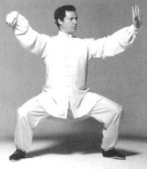
A set of movements performed in a smooth continuous flow, incorporating a dictionary of combat
applications. It is a core part of the training, taught and practiced in every session. There are long, short and advanced versions of the hand form, which is normally practiced in a slow concentrated manner. Hand forms are often seen in demonstrations and competitions.
Pushing Hands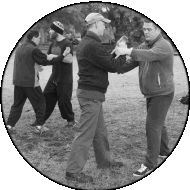
Training for close combat, using touch to sense the opponents weaknesses, then exploiting them
in non-damaging ways to disrupt the attack. There are eight principal methods of push hands, various auxiliary exercises, and ‘freestyle’ practice. As well as providing a platform for more serious combat training, this type of exercise is also used for competitions, in ‘fixed’ and ‘moving step’ variants.
Applications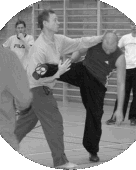
Techniques for fighting, most of which can be seen in the hand forms. There are kicks, various types of hand strike, locks, throws, and attacks to tendons, nerves and blood vessels. The emphasis is on practical self-defence, rather than competition. However, some students do participate in ‘san shou’ and ‘lei tai’ type Chinese MA competitions.
Weapons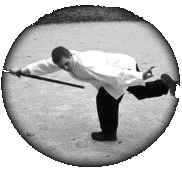
The practice of forms and applications with three traditional weapons – the sabre, straight sword and spear/staff. These are much more technically and physically demanding than hand forms and applications. Weapons skills may not be as useful as a gun, but may be transferred to everyday objects such as bottles and sticks.
Internal Strength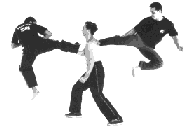
A set of movements and postures, 12 Yin and 12 Yang, which dramatically boost health and martial conditioning. They are similar in some respects to the set of Chinese health practices named ‘Qi gong’ (‘Chi kung’) – indeed the Chinese name for them is ‘nei gong’, which translates as ‘internal work’. These exercises are only taught to advanced students who have been formally accepted as ‘inside the door students’, and as such are never demonstrated or taught openly.